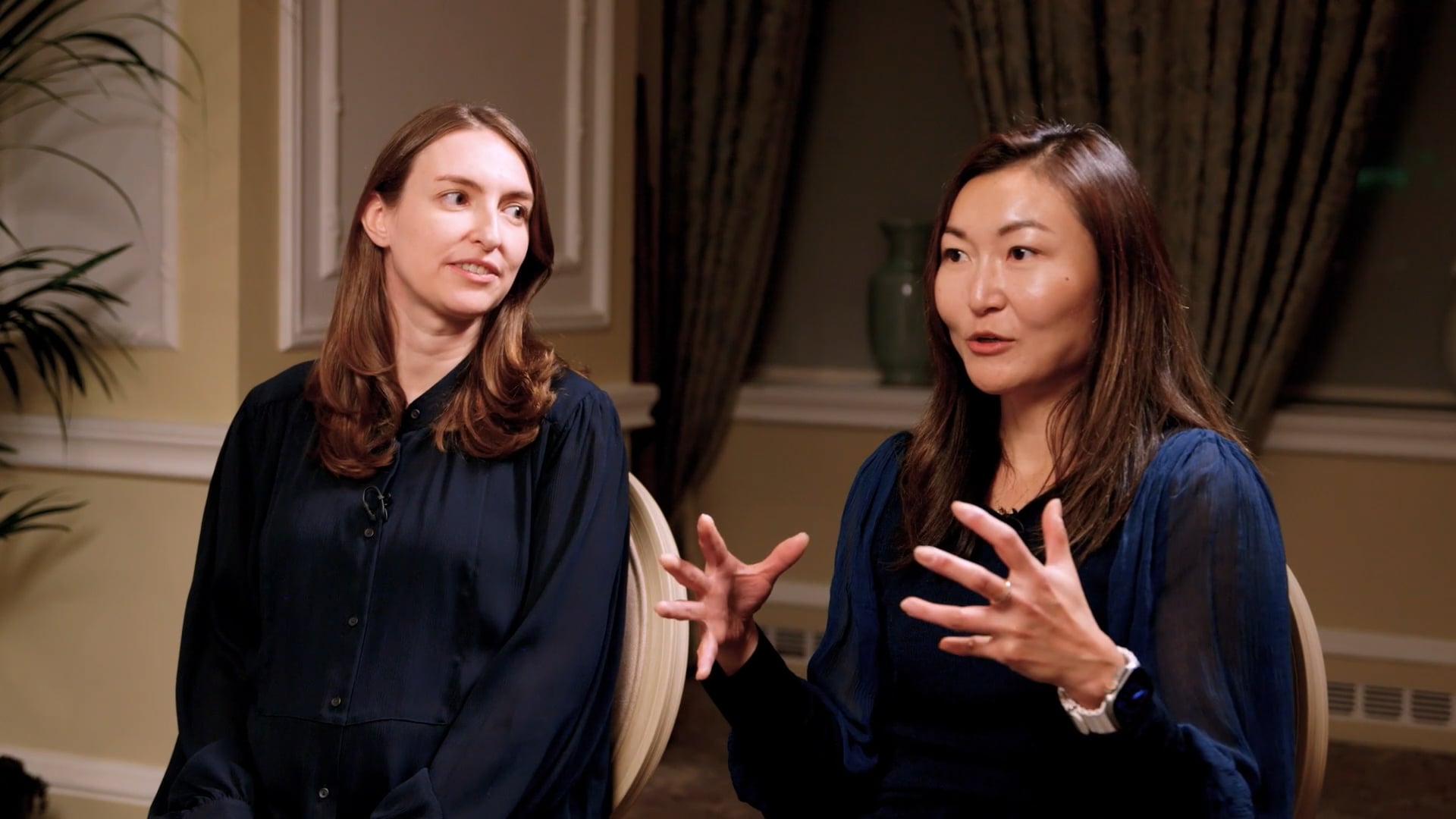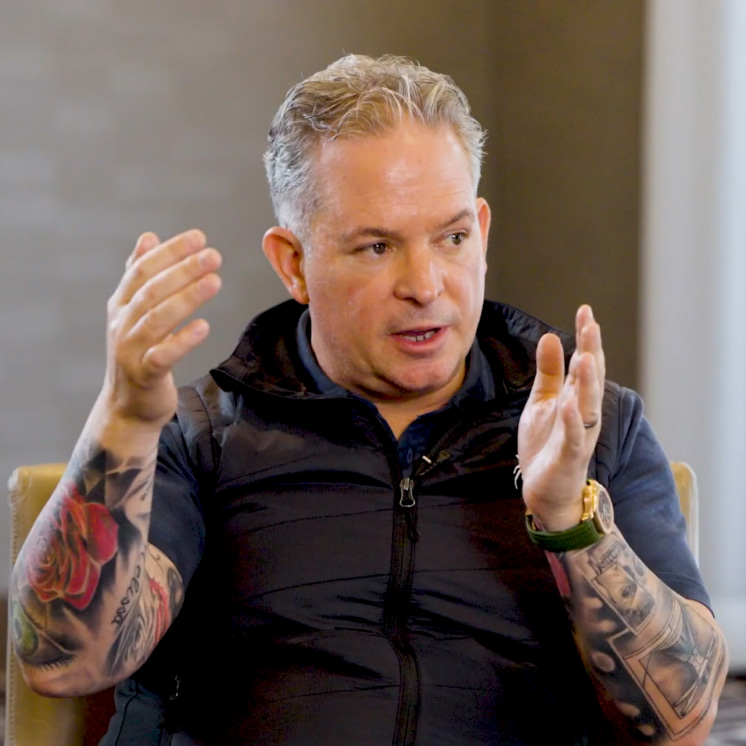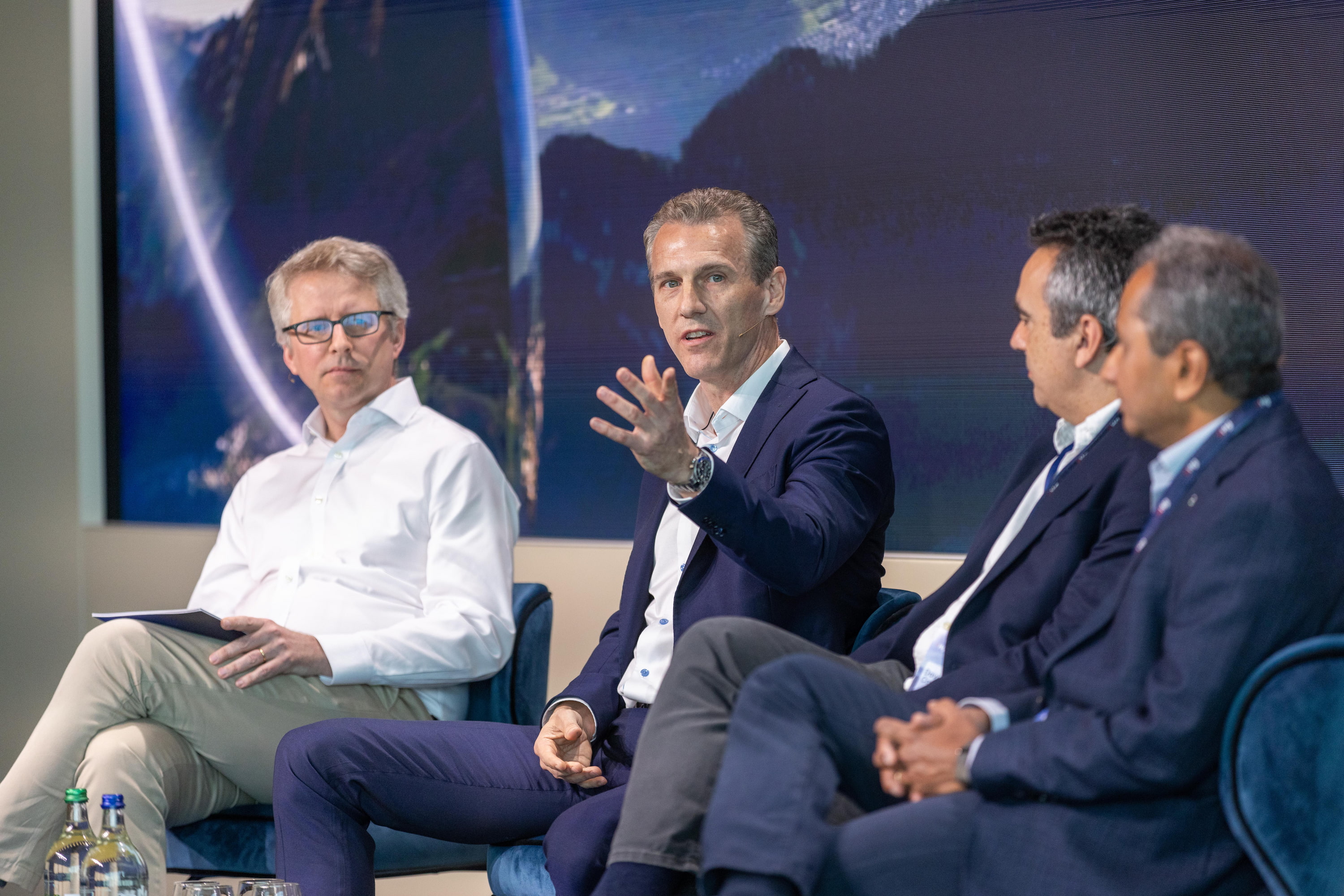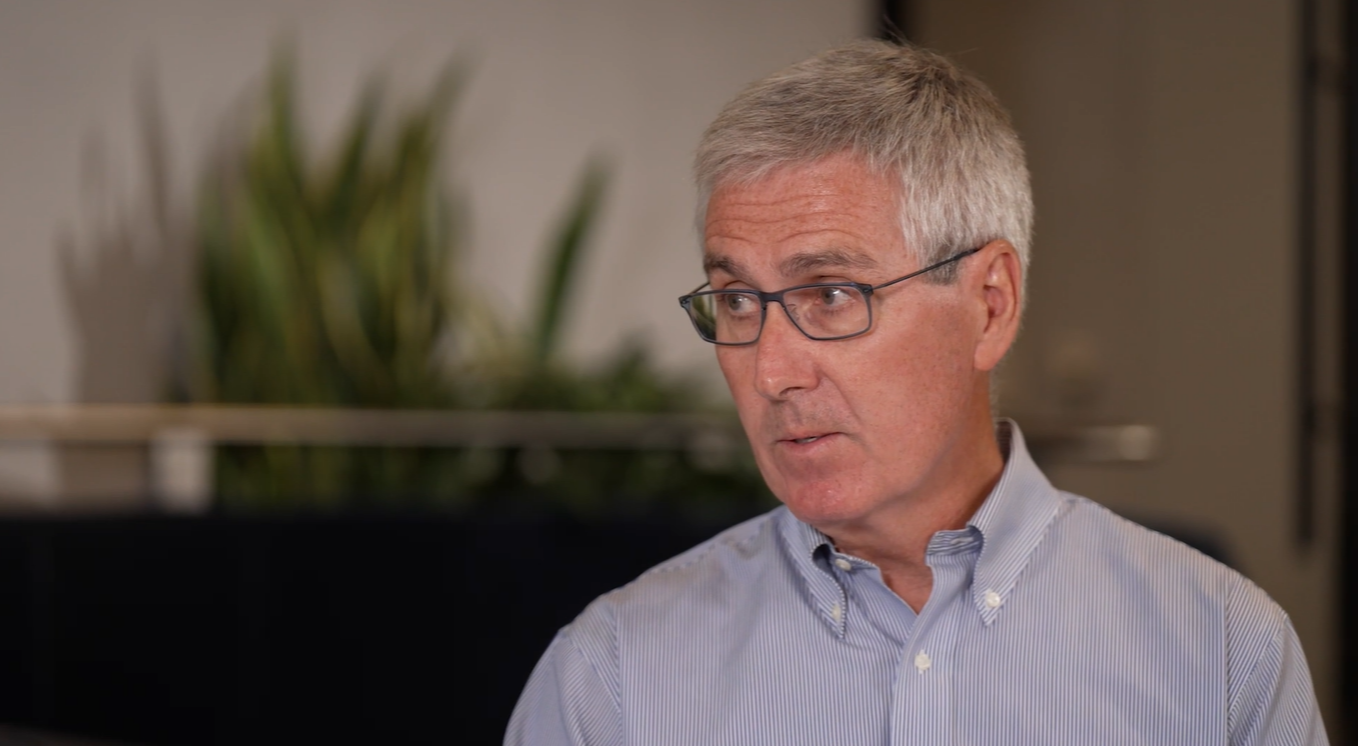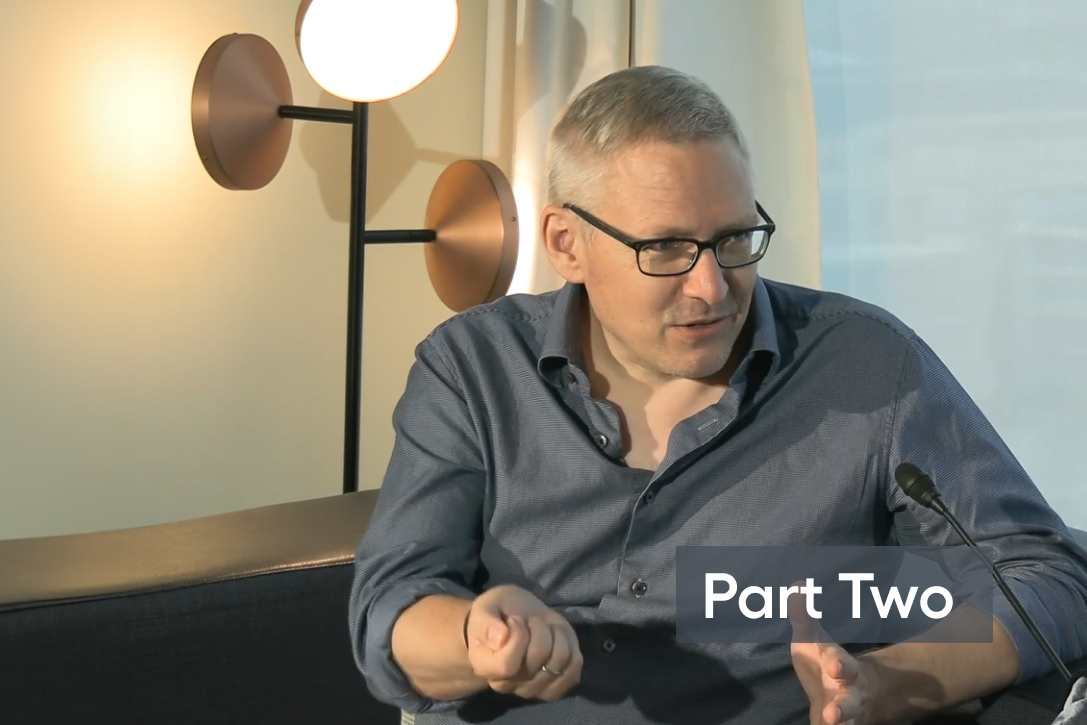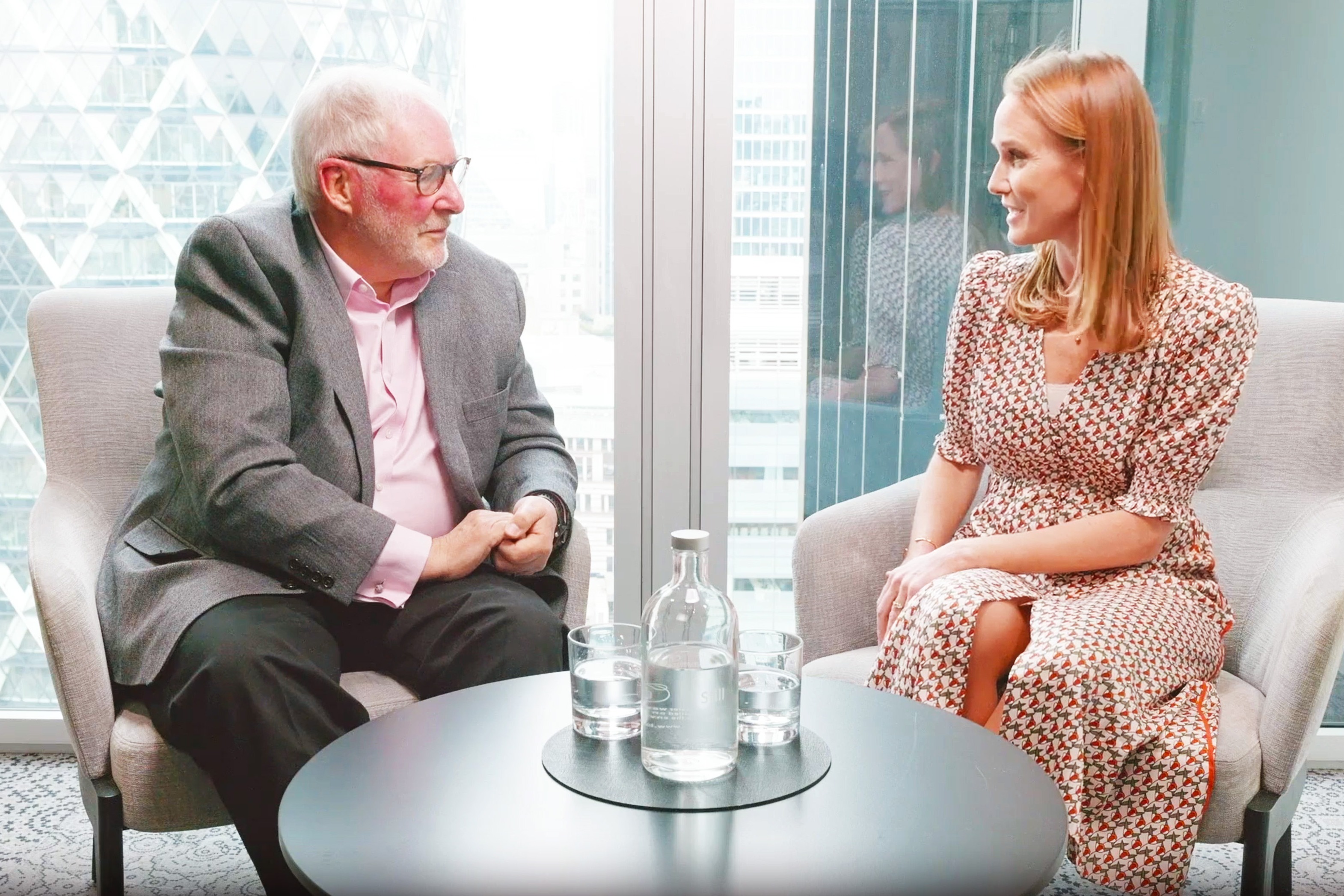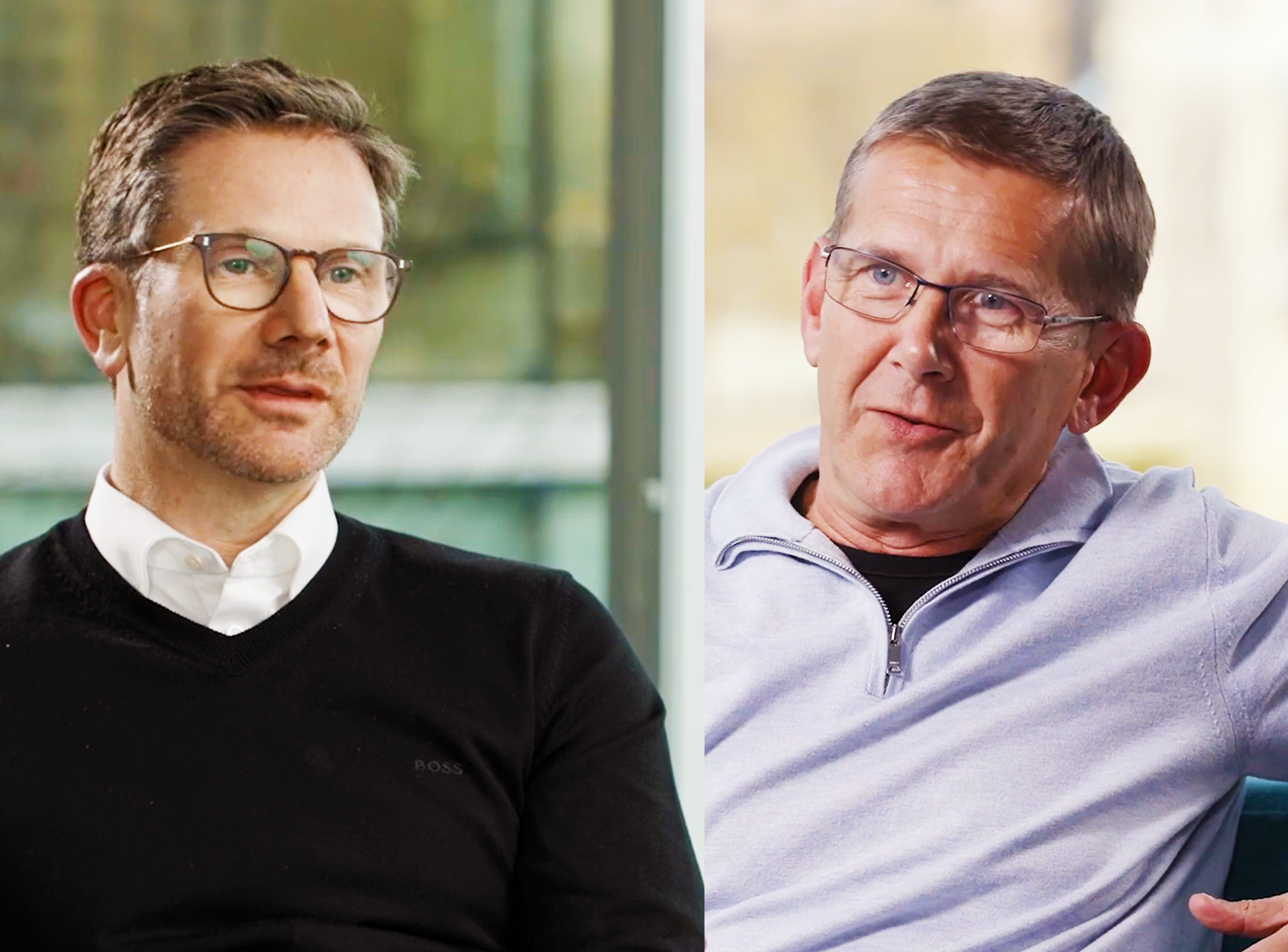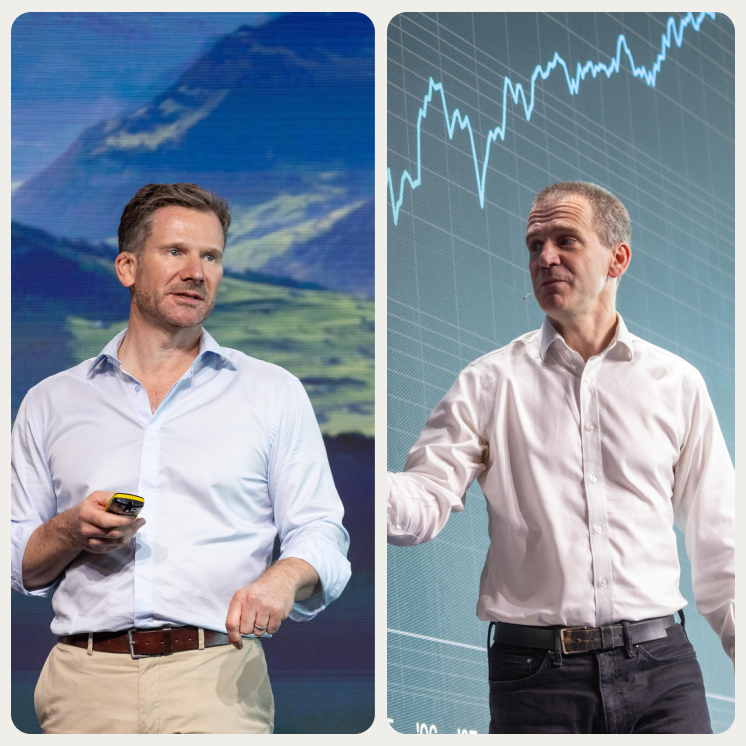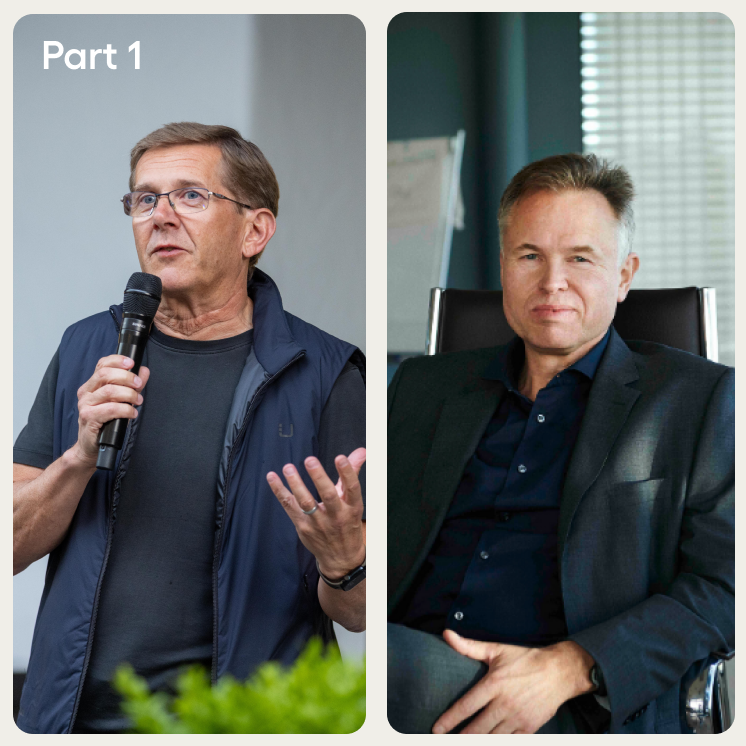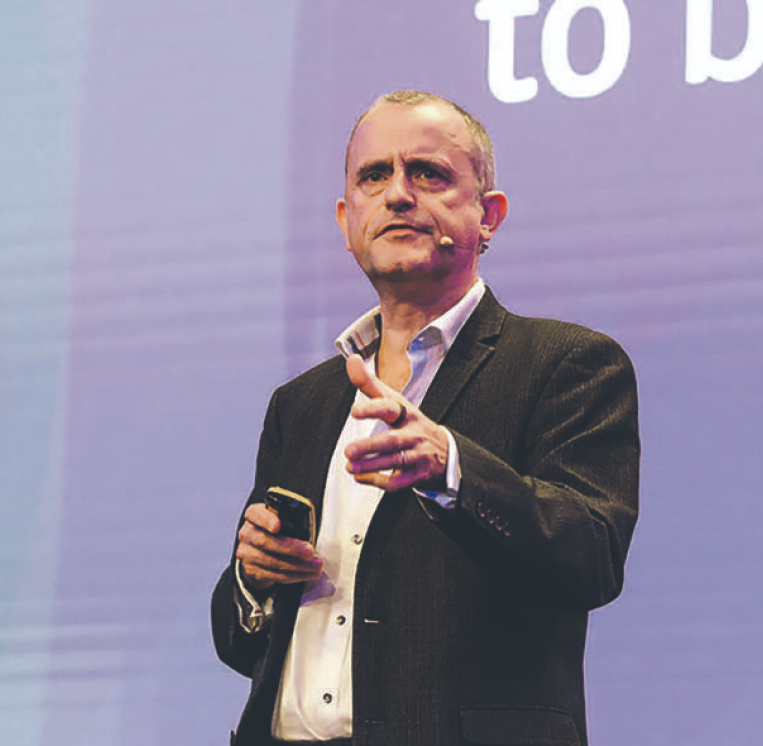Orbit Podcast
Orbit 22
Building a Growth Engine
The role of a software Chief Growth Officer encompasses a range of functions, from product marketing to pricing to sales, which report on a wide range of metrics. Getting these functions to work together can create a growth engine for your business. But how do you measure it? How do you optimize it? In a dynamic digital world, we can look at revenue growth right through from lead to revenue, but many businesses are stuck reporting function by function.
Listen on:
Episode Transcript
Jolanta Pilecka
Welcome to our Hg podcast series, where we speak to leaders and innovators from across the software and tech ecosystem, and we discuss the key trends that change how we all do business. I’m Jolanta Pilecka, part of the Hg’s portfolio growth team, and today I’m joined by Mark Fulford to discuss Hg’s growth framework, a blueprint we created to help our portfolio companies drive scale when growing. So, great to see you, Mark.
Mark Fulford
Thank you.
Jolanta Pilecka
Thank you for joining.
Mark Fulford
Yeah. Good to see you.
Jolanta Pilecka
Why don’t we start, Mark, by explaining, introducing the growth framework, the what and the why?
Mark Fulford
I think about the growth framework as a single comprehensive structure for understanding how effectively and efficiently this engine works. So, in other words, how it acquires, how it retains and develops customers. The reason I came up with this model is, because frankly, I was finding that the old approach of just looking at function by function performance as outdated, ineffective, and not really driving the inputs and results that I wanted to see. So, thinking of the growth framework as a comprehensive way of looking at these elements, was for me the way forward.
So thinking around things like you have your go-to-market strategy, you think about your market potential, but then really, how do you think about acquisition and the elements that play a part of that? Retention renewals is an element of that, especially in SaaS based businesses. Of course, expansion around upsell, cross sell, and pricing and packaging and all those drive revenue, all of those are seen as growth levers.
So for me, thinking holistically about that, almost in the sense of this role of being a chief growth officer, well, how would you think about that model? How would you measure it? How would you optimize it? How would you have your functions working together, was really the driver. So for me, that’s why we have the growth engine. That’s why we run a growth summit. That’s why we invited our executives from across the functions together, because I think it’s such an important aspect.
Jolanta Pilecka
Yes. I think that’s exactly something we spot straight away, the moment we start with a new project and what I see that the best performing companies tend to function like seamlessly connected systems. In other words, well-oiled machines. Yes?
Mark Fulford
Yeah.
Jolanta Pilecka
The handshake between various teams defines the common quality denominator and the weakest link tends to expose the business and negatively impacts the outcome.
Mark Fulford
Yeah. What do you think the telltale signs are? What is it that you see that go, ah, yeah. That’s not working well.
Jolanta Pilecka
Again, based on experience, the key things I look at the starting point is review the total addressable market, the segments, ideal customer profile, and we tend to get it from a diligent DD. Then I look at how all that output is mapped into functional plans. How are those functional plans connected and how is that connected, integrated with the business focus.
Mark Fulford
Right. Would you see that coming through right then, through to how they talk about it? Yeah. How they meet, how often they sort of compare and contrast plans? Give us some sort of real tangible examples of kind of how you think that appears.
Jolanta Pilecka
Well, the couple of examples, depending on the size of the organization. I’m quite passionate about zero touch self-service. That has to be developed in collaboration with product marketing, pricing and sales.
So I would like to see the evidence of that zero touch self-service in individual functional plans and how they are connected, resourced and what are the timeline, because ultimately we all own the end to end customer experience. If that customer experience is not owned by those four teams and customer success, suddenly there is this joint. What we end up with is customers come to the website and lose interest, the shopping basket is ignored. Many reasons why we get a lead leakage. That usually comes from the fact that functions don’t collaborate.
Mark Fulford
That’s a good point. I think one of the… Wrote an article a few years back around this concept of the chief growth officer, and that was part of the reasoning behind having a growth function. Then similarly, bringing together all of the people who make up the growth engine from our portfolio, hence the recent growth summits. That concept of viewing the business likely single chief growth officer, I think, is playing to your part, is what are the different elements that come together? I’m not just responsible for one part. I look at all of the parts together. Yeah. That makes sense.
Jolanta Pilecka
The holistic perspective. I’ve just mentioned example of the businesses focus on SME’s, zero touch serve service, but equally importantly, that collaboration and strong handshake between various teams, is required at the enterprise level. I see that evidently when ABM, account based marketing, is implemented, I only see it functioning properly if experienced market shares work jointly with sales and customer success, develop joint account plans. Then bring technology to facilitate it, rather the other way around. Again, working with silos is not going to deliver the outcome. It’s the collaboration that matters.
Mark Fulford
Yeah. I totally agree. When it comes to strategic account planning and thinking about what are my strategies that I want to execute to either acquire or grow existing customers? That planning, if you’re not sharing that with the marketing team and product marketing, then my view is how the heck do they know where to spend their effort and time? I agree. That handshake there is for me, a telltale sign of, is marketing involved in strategic account planning? Do they review the plans? Do they look at them? I think that’s a key area. Yeah.
Jolanta Pilecka
Do they have the communication plan and generation plan to land and expand?
Mark Fulford
Correct. Yeah, exactly.
Jolanta Pilecka
Well, so moving on slightly, how do we measure success? What are the key measures and KPI’s to bring those silos together, to reduce the siloed reporting, so to speak?
Mark Fulford
Yeah. Well, this is a topic close to my heart, and again, I’d love to get your input, but my view is that the way we tried to think about the effectiveness of this growth engine is actually looking at what I call the three EFs, which is efficacy, which is about the results, efficiency, which is about kind of how you achieve those results and effectiveness is what is it that you’ve achieved those results through? Let me give you an example. So effectiveness of your go to market strategy might be around, are you cross-selling, are you selling into specific markets? Are you achieving the results in the way you want to achieve them? Whether it’s rates of new products or competitive dynamic, it’s how you get there. The efficiency is really about what return are you getting for your investment?
We can talk about marketing in a second, because I know that’s an area close to your heart, but it’s really around measuring the efficiency of your engine. So are your sales quotas optimal? Is your attainment of your quotas by your reps, optimal? What is your overall return for S and M spend? That’s the efficiency part, which all lead to the efficacy, which obviously the results. For me, far too many times, I see boards and board decks reporting on very laggy metrics, which is obviously just revenue or sometimes not at all. So not even quizzing at board level the effectiveness of the growth engine.
That’s kind of how we like to view it. So again, viewing the whole pie, if you like-
Jolanta Pilecka
End to end.
Mark Fulford
End to end. Exactly. Now, one of that, the most important piece of that pie, I think is that top of funnel, lead generation and flow through. I wanted to ask you about what you see as best practice around really understanding that sort of drive to drive opportunities into the sales funnel and what you see works well? Also, where you see the common mistakes?
Jolanta Pilecka
I think starting with board reporting, that’s another tell tale of lack of integrated growth strategy.
Mark Fulford
I agree. Yeah.
Jolanta Pilecka
Because mostly you tend to get marketing report and sales report and I cannot combine them, link them together. What we need is lead to revenue reporting.
What I’m fascinated about is modern marketing is now a science, rather than art. Art cannot be ignored, because we still need a differentiated value proposition. We need to stand out from the crowd. However, today’s marketing is all based on data and tech. Everything in marketing is trackable and every piece of data creates the insights that gives us the opportunity to improve. That’s what really fascinates me about modern good marketing teams, mature marketing teams, that they continuously improve and continuously modify the final decisions, depending on the data elements they gather on an hourly basis.
So going back to your initial question is, there is never a well defined formula, which channel, which leads source, how we approach the market, but the modern marketing tools give you the opportunity to test everything.
Mark Fulford
Got it. Yeah.
Jolanta Pilecka
Within a matter of a couple of months, you become an expert. The challenge is to have the underlying infrastructure to track-
Mark Fulford
To support that. Yeah.
Jolanta Pilecka
The activity and the knowledge of how to turn the data, raw data, into meaningful insights that help you optimize the output outcome.
Mark Fulford
Yeah. I think it’s really interesting evolution, because I think if I think back 10, 15 years ago, this is where we were with CRM and the basic sales funnel. Just having that insight understanding from opportunities through to close what’s working well, what markets are working well, who’s performing well? I think what you’re introducing here is not only the lead funnel, but as you say, that end to end view or transparency of what’s working well, where do I double down on, what do I stop doing? I would say that certainly from my view, that’s probably the area that is least addressed. Could go into a company tomorrow and say, show me your end to end, lead to opportunity to revenue flow. I would say that not many can, so it’s probably an area that many people should think about. Again, do they understand their spend today and what they’re getting for that? Yeah, that makes sense.
Jolanta Pilecka
One could say that in order to be able to provide that end to end reporting, irrespective of the function, it’s the customer acquisition, versus customer retention, versus customer upsell. That’s the style, that’s the format structure of board reporting. I would like to see we are moving into…
Mark Fulford
Yes.
Jolanta Pilecka
In order to be able to do that effectively, we need a completely connected stack. There’s a big discussion to be had. Do we maintain marketing ops function marketing, sales ops function sales, or do we invest in a connected revenue ops?
Mark Fulford
Yeah, no really interesting. I mean, again, I think about the overall growth engine and I agree, I think that we should be measuring and monitoring that in spite of the functional inputs. It is just how effective are we at acquisition and consider that all of those functions you mentioned earlier, be it marketing or customer success or sales, they’re a part of that, but we’re not measuring sales per se. We’re not measuring marketing. We’re measuring the effectiveness and efficiency of the acquisition engine.
Similarly for retention and similarly for upsell and cross sell. I think these are the underpins that help a business scale, because one of the other challenges that I think about is, it’s great if you are a $20 million business, but what happens when you scale to want to be a 300, $400 million business? What are the elements there to think about? I think you start to touch on that. I want to just draw that out a little bit to think about really, when it comes to scaling well, what are those cool things, other things you said, are there things that people should do first or second? What does scaling really mean?
Jolanta Pilecka
I think the scaling discussion, this has now become our second nature. Everything we plan to execute has to pass the criteria. Is it scalable? One thing I learned in the early 2000’s from mature investors is, the best companies to invest in are software, because you create ones, you write ones and replicate many times. I apply the same formula to every functional or operational project I work on. If we could reduce replication and create high quality and then duplicate it, repeat it, but with a well defined framework, we’ve got a winning approach.
Mark Fulford
Yeah.
Jolanta Pilecka
Where we need to be focusing on, is removing mundane, repetition of the same things. That’s very noticeable in larger businesses, especially when they operate globally, where we have business functions, repeated the same business function across various regions. 80% of what they do is the same. If we had a shared resource centrally, center of excellence, as I call it, where we have functional experts, creating templates, playbooks, best practices, centrally and skillfully, diligently, rolling them out into various operations fields or business units. The key principle is to avoid manual duplication. That’s why I’m, as a software engineer, I’m passionate about workflows and automation. If we can automate repeatable tasks, we drive scalability.
Mark Fulford
Yeah. I mean, you touched earlier on and know early on as well about the whole thing, about marketing is a science. I have the exact same view around sales. It’s absolutely science and less art, but you touched upon something there that I just want to kind of get your views on, around this sort of centralized functions and serving the business, which brings me onto the topic of kind of revenue ops and marketing and sales ops and how they run today. Again, typically they run as separate functions. Again, if we’re going to be talking about collective thinking around growth, what’s your sense around whether these functions should be working together? Should there be a growth, sort of operations function, rather than separate? Is that the next wave or do you think there’s kind of a reasonable excuse or reason to have them separate?
Jolanta Pilecka
Well, I fully believe they should be connected. They should be run under one individual, who is accountable for end to end customer experience.
Mark Fulford
Yeah.
Jolanta Pilecka
For me, end to end is fundamental, otherwise we fragment it. There is a lead process owned by marketing. There is an opportunity process owned by sales. There is a wall between the two and nobody wants to manage that interlock. So ultimately accountability is the key for the end to end experience. It’s much easier to define the processes and a connectivity integration in the systems, if they are part of the same stack. The technology stack is now more than 4,000 tools. Choosing the right tools at the right stages, is a challenging task.
Mark Fulford
Must be a combined decision, right? It has to be a combined decision.
Jolanta Pilecka
Exactly, because again, I actually don’t believe anymore that sales and marketing work in different teams. That’s why that growth executive position is very tempting, because they have to be connected from the lead through to revenue. Even at the late opportunity stages, I see marketers listening to the sales goals to understand the objections, because we can create content, addressing those objections for the early stages of the journey. Those objections would be removed and the deal closed faster.
Mark Fulford
Yeah. No, I agree. I think we saw that when we had our executive together at the growth summit, where pretty much all of the topics were of interest to everybody, which tells me exactly what you’ve just described. Is that actually everyone can find an angle to think about how do I make that process better? Or how do I make it more efficient or effective? Yeah. Agreed. On that, just on the topic of tech, you mentioned that there’s so many tools out there. Any views on kind of must haves or things that you find are kind of superfluous to requirements? What’s your sense on the whole tech play?
Jolanta Pilecka
I spent, I think I’ve when I joined Hg, I analyzed 300 chores. So I got my favorite list, but I’m not going to go one by one. One thing I believe in, is that it’s not about tech, it’s about processes and skills first. Once we’ve got a process and skilled team, we could then consider tech. Not the other way around.
Mark Fulford
Right. Got it.
Jolanta Pilecka
I see too many bad implementations of HubSpot. It’s the easiest tool to manage and optimize. Yet it’s not integrated properly with Salesforce or not templated. So actually it’s used as a glorified email marketing system and they pay 50, 60K a year. Not justified. So yes, naturally, there are [inaudible 00:18:27] solutions like marketing automation, CRM, sales enablement, personalization tools. We should take it step by step and walk into implementations one by one. Justify once the process in place and there are resources to manage the implementation and management of the tool. That’s why I’m always worried of bringing ABM tools. They are complex. They are very expensive. Unless we’ve got skills in marketing and sales, to drive ABM, unless we have a connected team working together.
Mark Fulford
Why invest?
Jolanta Pilecka
We will use six sense or terminals as a glorified LinkedIn advertising platform. Sorry guys. The vendors are listening to us.
Mark Fulford
Okay. So is a really fascinating discussion. If you had something to leave as a sort of call to action for senior leaders, functional leaders, listening to this, what would would that be? What would you challenge them to do?
Jolanta Pilecka
I like the concept of the chief growth officer. It may not be something the businesses are ready for today, but it’s good to whatever position you are in. If you’re a senior executive in the business, it would be useful to take a step back and look at the business growth strategy, rather than sales per performance or marketing performance of customer success performance. Let’s look at the growth and let’s look how, so we are taking a holistic look at the growth strategy and we then dig deeper into how various functions contribute and what is the interlock?
Mark Fulford
Yes.
Jolanta Pilecka
It’s reviewing that interlock will identify the weaknesses and strengths of our operations, and that will actually give us a very pragmatic plan. What to address first, what’s the highest priority, versus what can be done, midterm? At least that’s my perspective.
Mark Fulford
Yeah, no, I like that. I guess, I’d build on that and challenge the senior leaders to look at their reporting, look at what they collect today and genuinely ask themselves, do they do anything different as a result of looking at those numbers? I call this actionable insight, and I think that’s what you’re referring to really. It’s about, do you have something in front of you as a set of measurements or key performance indicates that actually allow you to do something different? So whether it’s about spend more here, spend less there, be more effective, but more efficient. It’s just challenge it. The numbers you look at, but at board level functional level and say, are they working for me? I think the only way they’re going to do that is if you take a holistic view end to end, otherwise it becomes very difficult to change something in isolation, which is, I think the topic of what we’ve been discussing.
Jolanta Pilecka
Just to close, the whole concept of customer centricity has been abused, because everybody talks about it, but actually focusing on customer centricity, focusing on the complete end to end customer experience, is the foundation. It’s the key critical success factor for the growth strategy to exist, to flourish.
Mark Fulford
Excellent.
Jolanta Pilecka
Well, very interesting discussion. We touched several areas, Mark, and I think there is probably more for us to dig deeper.
Mark Fulford
Always.
Jolanta Pilecka
Thank you. Thank you for your time. Very insightful.
Mark Fulford
It’s been great. Thanks, Jolanta.
Orbit episodes
Orbit Podcast
The 3 speed problem: Oji Udezue on CPO leadership in the age of unlimited engineering
Episode detailsOrbit Podcast
Fevered determination: Building Zalos from zero to enterprise in 5 weeks
Episode detailsOrbit Podcast
Trust, velocity, and building the Answer Engine: Dmitry Shevelenko of Perplexity speaks to Farouk Hussein
Episode detailsOrbit Podcast
The long road to the last mile: Nic Humphries and Matthew Brockman reflect on 25 years of Hg
Episode detailsOrbit Podcast
AI, Control Points, and the Next Wave of Vertical SaaS with Tidemark Capital founder, Dave Yuan
Episode detailsOrbit Podcast
A glimpse of the next generation: Zoe Zhao and Annalise Dragic of Azlin Software
Episode detailsOrbit Podcast
The business case for AI: Brent Hayward of Salesforce, David Carmona of Microsoft & Nagraj Kashyap of Touring Capital
Episode detailsOrbit Podcast
Mastering the billion-dollar software playbook: Joe Lonsdale of 8VC & Eric Poirier of Addepar
Episode detailsOrbit Podcast









